Foot pain is an issue almost as prominent as back pain these days, but we don’t pay it that much attention – and we should.
One of the most common causes of foot pain is plantar fasciitis, and it can become quite nasty if left untreated. That foot pain isn’t just going to go away overnight – you have to do something about it.
While foot massages and other treatments are a good start, the first step you should take to fix the problem is changing how you treat your feet every day. That means changing your shoes too.
Today, I’ll help you with that by taking a look at some of the best shoes for plantar fasciitis that I could find.
What is Plantar Fasciitis?
Plantar Fasciitis Shoes – What Are They and What Benefits They Offer
Best Shoes for Plantar Fasciitis in 2021 – Compare and Contrast
The 18 Best Shoes for Plantar Fasciitis in 2021 – Reviewed
Buying Shoes for Plantar Fasciitis Made Easy – A Buying Guide
Caring for Your Plantar Fasciitis Shoes
How to Treat Your Plantar Fasciitis
Plantar Fasciitis Shoes FAQ
What is Plantar Fasciitis?
I know that most people haven’t even heard of plantar fasciitis, even though they might have it. It’s a condition that often goes undiagnosed and untreated since it seems more harmless than it is.
Here’s the deal – plantar fasciitis is a chronic inflammation of the plantar fascia ligament, causing intense pain in your sole, heel and arch.
The main cause of plantar fasciitis is increased pressure on the heel and the plantar fascia. The reasons for this can be numerous:
- Overwork, like in long-distance runners or people who work on their feet
- Excessive body weight like in overweight people and bodybuilders or during pregnancy
- Structural foot problems like a tight Achilles tendon, a high arch and flat feet, either genetic or injury-based
- Other conditions like bone degeneration or muscle atrophy
- Bad foot positioning due to ill-fitting shoes or in a workplace that requires it
- Walking or running barefoot on hard surfaces
- Poor walking/running posture
There are a few misconceptions about what causes plantar fasciitis, and the main one relates to heel spurs – tiny bone bumps that can grow on your heel. As far as we know right now, these growths don’t cause plantar fasciitis at all.
Plantar fasciitis also isn’t hereditary. Sure, some risk factors can be passed down genetically, but that’s not a guarantee that you will ever develop plantar fasciitis. It’s an acute or chronic condition that can be prevented or cured, provided that you take proper care of your feet.
But, how do you know if you have it?
Here are the main symptoms:
- In the heel, the sole or the arch when performing even light physical activity, like walking or going up a flight of stairs
- The pain will appear strong during the first few steps upon waking up, improve slightly and then worsen throughout the day
- Intense heel pain after exercise
- Pain when flexing your foot
- Your heel is painful to the touch
- Swelling of the affected foot
- Redness on the top of your foot or near the heel
- A tingling or burning sensation in the affected foot
About two-thirds of people affected by plantar fasciitis only get it in one foot, which makes these symptoms easier to notice, but there are still people who get in both feet at the same time.
If these symptoms are not the direct result of a fresh injury and persist for a week or longer, you probably have plantar fasciitis.
Be aware that these symptoms can also be caused by other conditions, so make sure you go to the doctor and get properly diagnosed.
Plantar Fasciitis Shoes – What Are They and What Benefits They Offer
I know there are a lot of therapeutic shoes out there that are expensive and don’t seem to help with anything. Because of that, you might be sceptical that shoes can help you with plantar fasciitis and that’s understandable.
That’s why I’ll go over some of the main characteristics and benefits of shoes for plantar fasciitis to help you dispel those doubts.
For starters, what are these shoes?
Well, in short, these are just shoes that have the right shape and the correct amount of support needed to help relieve your plantar fasciitis by lessening the strain and pressure that’s put onto your feet.
They can be therapeutic shoes, but they don’t need to be – any shoes with the right shape, and proper support will do, no matter the cost or type. Some of the best shoes for plantar fasciitis might not even be designed with it in mind.
Still, most of these shoes will offer the same type of benefits to a plantar fasciitis sufferer.
1. Wider Range of Movement
Most shoes for plantar fasciitis are roomier than regular shoes, thus giving allowing for a wider range of movement for your feet.
In addition to that, since they will relieve the swelling by supporting your feet better, you’ll find that you’ll be more flexible when walking or running and it will all feel easier to do.
2. Pain Relief
The main benefit that shoes like this should offer you is pain relief. You should feel less pain from walking or running when wearing shoes for plantar fasciitis.
Your pain should be lessened as soon as you start wearing them, but if you’re looking for a huge improvement, I’m afraid that you’ll have to keep wearing the shoes for a few weeks to see that.
The reason these shoes help is because they offer better support for your foot, putting less strain and pressure on your inflamed plantar fascia. This helps it relax which reduces the swelling, thus reducing the pain you’re feeling.
3. Better Shock Absorption
Shoes for plantar fasciitis usually have thicker soles with good shock absorption properties. They are designed to put as little pressure on your feet as possible, and you’ll definitely feel that, especially when running.
The knock-on effect from the force with which your feet hit the ground when you’re running can have an effect on your entire body, so this is always a plus. It isn’t good just for your feet but for the rest of your body as well.
Best Shoes for Plantar Fasciitis in 2021 – Compare and Contrast
Here’s a comparison table for all contenders for the title of best shoes for plantar fasciitis in 2021, so you can skim it and get informed quickly:
The 18 Best Shoes for Plantar Fasciitis in 2021 – Reviewed
If you’re not sure not sure what to buy yet, here are my thoughts on what I think are the best shoes for plantar fasciitis currently on the market.
Gravity Defyer Women’s G-Defy Mighty WalkRoomy, Comfy, With Bad Airflow
—————–
The best thing about these shoes is how roomy they are – they will never feel constricting, and you have enough room to wiggle your toes around.
So far, the cushioning in it seems to hold up well. The sole is thick and absorbs most of the impact so walking in them tends to feel quite comfortable and stress-free.
The insoles are decent, but nothing special. They are removable though, so you can easily replace them with better ones if you buy them separately.
Let me tell you this though – use these shoes for walking, not running. They’re a bit too heavy to be proper running shoes, and they do tend to get hot since there’s not a lot of ventilation.
————-

- It’s extra roomy, and you have more than enough space for your toes and your whole foot
- They look great and aren’t the ugly therapeutic shoes you might be expecting
- For cushioning your foot, they work well, and the thick sole is good at shock absorption

- Breathability is an issue, and you might get hot in these shoes which is why they’re not ideal for running
- They are a bit bulky and could lose a bit of weight without compromising the functionality
It doesn’t matter how shoes are labelled – if a supposed running shoe is heavy, bulky and rigid, you shouldn’t run in it. Don’t just follow the label, follow your own common sense.
Good Overall, Could Be Better For The Price
—————–
While these are primarily running shoes, you can wear them for your everyday activities as well, since they’re rugged and durable.
Also, despite being marketed as men’s shoes, they’re perfectly well-suited for women as well. Just try them out ladies, you won’t regret it.
The sole is reasonably thick, but it remains quite flexible so it’s easy to move in them even though they might appear a bit bulky. You won’t feel too much of the impact when you’re running since the sole tends to absorb most of the shock and the support around the heel area is superb.
However, there’s not a lot in the way of cushioning, and the shoe inserts are sub-par.
They are also a bit on the steep side, so you might want to wait for a sale.
————-

- They will be a great fit for the majority of people
- Overall, the support is great, especially in the heel area where you will need it the most
- The sole seems thick but remains flexible and seems to be good at absorbing shock

- They could definitely use a bit more cushioning to make them more comfortable, and the inserts you get with them aren’t good
- For what you’re getting they’re definitely too pricey
Manufacturers tend to label certain shoes as men’s or women’s models purely based on the look or overall size of the shoes when they can easily be worn by anyone. Don’t limit yourself and freely test out shoes for the opposite gender – they might fit you better.
Vionic Men’s WalkerA Good Value For Money, With Wrong Sizing
—————–
If you have a high arch, these shoes will be ideal for you since they have extremely prominent arch support. Don’t get them if your arch is low though – you will feel uncomfortable.
The outer sole is also great at shock absorption, and that combined with the decent cushioning inside the shoe makes it feel exceptionally comfortable.
They’re decently breathable as well, and you probably won’t have problems with your feet sweating inside them. As far as space goes, they’re not exceptionally roomy, but you won’t feel trapped either.
The largest issue with them is the fit – as you can see, barely 58% people had the right fit when they ordered them. They run small, so you should get half a size or even a full size up, and that should resolve the issue.
Besides that, they are a bit on the flimsy side, especially the loops for the shoelaces. Nothing major, but still noticeable.
————-

- Great shoes for people with a high arch – the midsole is elevated and highly supportive
- The outsole is great at shock absorption, and there’s adequate cushioning inside the shoe
- The price for them is more than fair when you consider how good they are

- These shoes are a poor fit for most people – you’ll probably need to order a size larger to get the right fit
- Not as durable as you would think at first glance
Always check the user experiences when you’re ordering shoes without trying them on first – if they’re a poor fit, you’ll find some advice there, for sure.
Brooks Mens Ghost 10 Great Support & Comfort, At A High Weight
—————–
Overall, these shoes seem to be a great fit for most people, and you can definitely see that they’re designed for running. They have a clean, sleek look and they’re available in a wide variety of colours.
However, they’re not all looks. The foam inside them feels quite comfortable, and there’s a lot of it. Combined with the sturdy rubber soles, this makes for quite a comfortable shoe.
Sadly, that foam cushioning does tend to fall out after they clock around 300 miles or so don’t expect them to last all that long.
The insoles are better than you would expect and combined with the overall shape of the shoe, they offer great support for runners with a high arch.
They feel a bit heavier than I thought a running shoe with the moniker of ‘ghost’ should feel, but it’s not a huge deal.
————-

- These shoes just look great from all angles
- There’s lots of foam cushioning inside them to make you feel comfortable
- You won’t have to replace the insole since they come with a pair of good ones that offer decent support
- It seems that they are quite supportive overall, especially for people with a high arch

- They’re a bit heavier than you would expect a running shoe to be
- It seems that the foam cushioning is poorly made since it falls out after a moderate amount of use
Insoles can last longer than shoes do – if you have a pair of good insoles from shoes that fell apart don’t be afraid to reuse them with a new pair of shoes. Just make sure to wash them well.
ASICS Mens Gel-Venture 6 Running ShoeLight, Comfortable & Good Value For The Money
—————–
Running with these shoes on is quite a joy since they feel like they’re almost weightless. They don’t weight significantly less than most other running shoes, but the weight seems to be balanced better, resulting in them having a lighter feel.
They’re quite a snug fit, bordering with being a little tight in the toe box, which is smaller than it looks at first glance. However, they do fit decently for most people.
Overall, they seem to offer quite a good mix of high arch support and overall comfort with quite a lot of cushioning inside them.
Though there’s a lack of heel support, and your heel might start to slip out when you’re running, especially on inclines.
Besides that, this is quite a flexible, but durable shoes and all the parts seem to gel well. The cushioning won’t fall out in a matter of months like with most shoes, and the sole can take quite a beating.
————-

- These shoes are quite light and well-balanced, so you’ll barely feel their weight on your feet
- For the quality you get here, the price is more than affordable
- Good cushioning and great support for people with high arches
- They’re highly durable, and the cushioning tends to stay in place

- They feel a bit tight around the toes since the toe box is smaller than it seems from the outside
- It seems like the heel support is a sore point of this shoe, and you might feel it when running uphill
Don’t be fooled by how a shoe looks from the outside. If you can, try it out and if you can’t look at the experiences of others who’ve worn it to check how it’s like on the inside.
Gravity Defyer Men’s G-Defy IonSuperb Support, Not As Comfortable As You’d Assume
—————–
This is another good offering from Gravity Defyer – it’s a breathable and comfortable shoe that can be used for both walking and running.
Still, they do seem to be best suited for long periods of standing around. If you’re a cashier, for example, these shoes will be a godsend. The sole is quite thick and supportive, and the cushioning is extensive.
It’s sturdy too so you can get a lot of use out of it.
The support it offers is decent but nothing to write home about.
It doesn’t come with insoles that are that good, but they can easily be removed and replaced with better ones. The shoes are made with that in mind.
However, they are a bit tight at the top so putting them one can be quite a chore if you have large feet – or if your feet happen to be swollen.
————-

- The insoles can be easily removed and replaced with orthotics as needed
- Thick and supportive sole along with a lot of cushioning make it great for standing
- Useful for both walking and running due to overall low weight and great breathability

- The insoles they come with aren’t good enough for dealing with plantar fasciitis
- It’s difficult to put them on since they are tight at the top
While you can use one pair of shoes for both walking, running and work, it’s not something I would advise. Try to have a different pair for every activity.
Orthofeet Men’s Highline High Top BootsSpacious & Light, But Without Airflow
—————–
One of the high points of this shoe is the high-quality insole inside it, made specifically for treating plantar fasciitis. It offers great arch and heel support while being thick and cushioning your feet well, protecting them from impact.
Despite how they look, they’re also surprisingly lightweight due to their sole using air cushioning. They’re still heavier than most running shoes, but that’s due to the soft leather used to make the upper.
They’re also quite a bit deeper than most other shoes but roomier as well with plenty of space for your toes.
So, overall, they’re decent, but there are a few problems. Firstly, they’re not breathable at all, and it seems like they’re intended for rougher weather. However, they’re not waterproof either.
They are bit overpriced too, but they are comfortable even though they are a bit rigid and stuffy.
————-

- They’re quite roomy and offer a lot of space for your toes to move around
- Lighter than they appear first even though they’re not running shoes by any means
- The insole they come with is amazing, and it won’t need replacing any time soon
- Highly comfortable and supportive, ideal for walking

- The cost is quite high for a pair of shoes like these
- Despite how they look, they’re not waterproof at all
While leather is not the best choice of material for plantar fasciitis shoes, it can still work. There are no ironclad rules when it comes to shoes, and you should try out everything that seems like it might fit you. Let your sore feet be the final judge.
Vionic Women’s Kona Fitness Shoes Amazing, When They Break In
—————–
If you’re looking for a pair of affordable shoes that will help you deal with your plantar fasciitis, this is not a bad choice. They’re not too expensive and are more durable than you might expect.
The arch support is quite good here, due to the EVA midsole that’s raised up a bit. They’re not for extremely high arches, but for slightly raised ones they will work wonderfully.
The heel support is especially good with the insoles provided with the shoes. There’s plenty of space for your heel in there, and if any swelling occurs, you won’t feel it as much.
On the negative side, they do feel a bit stiff overall, probably due to the synthetic used in the upper.
And – well, this is subjective – but they look quite ugly, don’t they? I know I’m not the only one who thinks that.
————-

- Good support for high arches and great support for your painful and swollen heels
- They come at a great price and are quite durable
- The insoles that come with them are more than decent and don’t need to be replaced

- The colour combination is quite ugly
- The materials used to make them are quite stiff, so they need to be broken in
When you’re buying shoes for plantar fasciitis or any other condition, you should always put function above form, no matter how much you like your shoes to look great.
OOFOS Unisex OOcloog ClogSuperb Arch Support, Designed For Standing, But Not Breathable
—————–
If you’re looking for something to take to work, especially if you’re working in a medical profession, these clogs are a good choice.
One of the most important things is that they’re comfortable and provide decent support for plantar fasciitis. Their heel support is lacking, but the arch support is more than good enough to make up for that.
They’re obviously sturdy and built to handle a lot of pressure while also being safe – you won’t slip in them on wet surfaces.
Unlike most of these shoes, they’re machine washable and can be dried in the dryer, which is a big plus when it comes to maintenance.
The main problem with them is that you’ll be sweating a lot while wearing them since they lack any ventilation. They also absorb smells so they’ll stink almost constantly. You’ll probably need to wash them daily if you’re using them for work.
————-

- The arch support they offer is superb, and they’re well-cushioned with a thick sole
- They can be put into the washing machine and dried in a dryer which helps with keeping them in good shape
- Slip-resistant so they’re well suited for various work environments

- It seems that they’re not breathable at all and your feet will get hot in them
- Over time they absorb smells so they can get quite stinky
Clogs might seem unsafe for a work environment, but as those in the medical profession will tell you, they’re among the best work shoes around. Don’t hesitate to try them out, especially if you have plantar fasciitis. The lack of constraints on your heel will help with the pain.
Vionic Women’s Kea Orthotic Trainers Quick & Easy To Put On, Great Support Considering The Form
—————–
While these trainers might look quite flimsy, they’re surprisingly durable and good at providing support. The arch support they provide is decent, but the heel support is even better.
They’re laceless, which has some upsides and downsides. They’re easier to put on and take off, but you can’t exactly adjust how tight they are to your liking. Luckily, they do offer plenty of room for your feet.
Despite the mesh upper though, they’re not breathable enough, and your feet will certainly get hot inside of them. They also absorb smells rather easily, and it’s difficult to wash them, which is the worst combo imaginable.
————-

- They’re laceless, so they’re quite easy to put on or take off
- Surprisingly durable and offer a lot of support for your arch and heel
- There’s more than enough room for your feet inside of them

- They absorb smells easily so they can stink a lot and it can be difficult to wash them
- Since they’re not breathable enough, you will sweat a lot inside them
Laceless shoes like this can look like a cheap gimmick, but for people who can’t bend down to tie them, they’re lifesavers. They might be the right for you as well – you won’t know until you try them out.
Vionic Women’s WalkerGreat For People With Narrow Feet
—————–
While these are marketed as women’s shoes, they’re accessible to men as well – if you can fit into women’s sizes, that is.
Their shape can certainly be a problem. They’re a bit on the long and narrow side, which can feel a bit constricting.
Besides that, however, they’re quite good shoes. The support they offer for your arch is superb, and they’re well-cushioned too.
The upper is mostly made out of leather that’s flexible enough for comfort, but it’s not too breathable.
It has quite a good pair of insoles made from textile and EVA and quite accommodating. Combined with a flexible and sturdy outsole, they provide quite a lot of comfort and relief.
————-

- They offer great support for people with a high arch
- There’s a good pair of insoles included with them made from EVA and textile
- The outsole is sturdy and flexible while being good at shock absorption

- The shape is a bit too long and too narrow for comfort
- Due to the leather construction, they’re not as breathable as they should be
If your shoes are too narrow and your foot can’t move around, that will put additional strain on your plantar fascia, the same as if the muscles in your foot were rigid.
Merrell Women’s Siren Edge HikerGood Overall, Misdirective (Not Waterproof)
—————–
It’s nice to see that even hiking shoes are being designed with plantar fasciitis sufferers in mind.
They start off well by offering a lot of good cushioning, a tough sole made out of Vibram that’s good at absorbing shock and proper arch support. The heel support is also decent, and the inserts that come with the shoes are nothing to scoff at either.
One of the major issues with them is waterproofing – they’re simply not, even though the manufacturer claims they are — not a good look for hiking shoes.
They also don’t hold up well in more extreme condition and will probably be falling apart in a matter of months. They’re not as durable as they claim to be.
————-

- The tough sole and cushioned insides offer a lot of relief
- They offer good arch support for your feet
- You get good inserts with them that you won’t need to replace

- Not nearly as durable as they should be
- The manufacturer claims that they are waterproof, but they are not
Hiking if you suffer from plantar fasciitis is perfectly possible with the right pair of shoes on your feet. Be careful but don’t let this condition stop you from doing what you love.
ASICS Women’s GEL-Venture 5 Running ShoeGreat Overall, But Not As Good For Plantar Fasciitis
—————–
If you’re looking for a pair of running shoes, ASICS is a good brand for you. They offer a wide variety of running shoes, and this is one of their better products.
While not the lightest shoe available, it’s quite well-balanced, so you’ll barely feel the weight of it when you’re running. The mesh is breathable, and your feet won’t get stinky inside of it.
The sole is thick, and the inside cushioning is quite comfy. It’s roomy as well, offering more than enough space for your toes to wiggle around.
So, what’s the problem?
Well, they don’t offer quite enough support for people with plantar fasciitis. They might still be good for you if you have a lower arch, but they certainly aren’t as supportive as you’d expect.
Luckily, the shoe inserts are removable, so this can be improved upon with some good orthotics.
————-

- Made out of breathable fabrics and well-balanced, so you don’t feel their weight on your feet
- The sole is durable and flexible while also being resistant to slipping
- The GEL cushioning system works well and makes you feel comfortable

- These shoes are not supportive enough for people with high arches suffering from plantar fasciitis
- Most of the colour options are not pleasing to the eyes
If you think a shoe is great but it has one flaw and you believe you can fix it, go for it. It might just be worth the trouble.
Brooks Men’s Addiction Walker Walking ShoesTop-Notch Arch Support, Heavy On The Foot
—————–
Sometimes it might feel like high arches get all the love, so here’s a pair of shoe well-suited to those of you with low arches that suffer from plantar fasciitis.
The support they offer is great, both in the arch and the heel area and you won’t overpronate when you’re wearing them.
The outside of the shoe is made from leather, but it’s not rigid at all – everything from the sole to the top is quite flexible.
There’s not much wrong with these shoes overall, but there are a few minor problems. For example, the soles can get quite slippery when it’s wet. They’re also on the heavier side, but they are walking shoes, so that’s less of a problem. You shouldn’t run in them.
————-

- The support they offer for a low arch is more than adequate
- Flexible all around and made from durable materials
- Filled with great cushioning material that makes you feel extra comfortable

- They’re heavier than you would expect them to be
- The soles are extremely slippery on wet surfaces so watch out
While people with low arches are less likely to suffer from plantar fasciitis than people with a high arch, they’re still at risk. Wearing shoes like this can help stop plantar fasciitis from occurring.
ASICS Women’s Gel-Kahana 8 Trail RunnerHigh Comfort & Cushioning, in ASICS Style
—————–
The fit of these shoes is quite consistent, and you get what you ordered. They’re lightweight and clearly designed with runners in mind.
As far as arch and heel support goes, there are no problems with that here – the shoes deliver on both fronts.
The sole is flexible yet rugged and great at absorbing the impact during running, while the cushioning inside makes the shoes extra comfy. The rearfoot GEL cushioning system keeps your heel safe in particular.
However, if you’re looking for stability, you won’t exactly find it here. The soles are quite slippery, and on surfaces like marble or tiles, you’ll have a hard time. If they’re wet – God help you.
I know it’s a minor complaint, but ASICS shoes can look quite ugly, and the colour combinations here are not nice at all. It’s not just me either – plenty of people complain about it.
————-

- If you’re looking for good arch and heel support, you’ll definitely find it here
- Great cushioning system designed to keep your heel as safe as possible
- Lightweight and clearly designed for runners with a flexible and durable sole

- As usual for ASICS, all of the colour options are rather unpleasant to the eye
- The soles are too slippery for comfort even on surfaces that aren’t wet
Your running shoes need to be stable on almost all surfaces – you’re in serious danger if they’re not.
KEEN Women’s Presidio ShoeIf You’re Looking For Grip, These Are For You
—————–
These shoes have an extra wide and thick sole that’s great at shock absorption during long work hours.
They also feature an extremely roomy toe box, which is uncharacteristic for women’s shoes but much appreciated by the ladies I’m sure.
You might not notice at first, but the sole is grippy as well, allowing you to stay on your feet even on slippery surfaces. That’s another thing that makes them great for work environments.
Sadly, they don’t offer quite as much arch support as you would expect, even though their heel support is quite good. It can be fixed with better shoe inserts, but still.
————-

- These are great work shoes due to having a wide sole that can absorb a lot of shock
- The soles are resistant to slippery surfaces
- You get plenty of room for your toes in these shoes

- They don’t offer enough arch support for high or low arches
- You will need to replace the shoe inserts that come with them
Women’s shoes tend to be made with pointy tips, which is the reason a lot of female medical workers buy men’s shoes – they’re just more comfortable. It would be great if this trend changed.
Vionic Lizbeth Women’s T-strap Orthotic Sandal Great Summertime Companions
—————–
If you’re looking for something more casual that will still help you with your plantar fasciitis, these sandals are a good choice.
They look stylish and free up your foot while also having a tough rubber sole that offers more than adequate support for a high arch. Their heel cup is also great for people with plantar fasciitis.
The adjustable heel strap helps a lot with the fit, but they do have a strange shape, and it can be difficult to find the right size without trying them on.
They can also feel a bit heavier than you would think at first.
————-

- They free up your foot and offer good arch and heel support at the same time
- The adjustable heel strap helps you get the right fit
- You’ll find that they’re as good-looking as other sandals that don’t offer the same support

- Finding the right size can be difficult due to the unique mould used to make them
- While they seem light, they are a bit on the heavy side compared to other sandals
When people think about therapeutic shoes for dealing with foot conditions, they think of large, ugly, bulky shoes – but that doesn’t have to be the case. These sandals are a great proof of that.
Vionic Women’s Rest Joan MuleHighly Comfortable & Great Support, Ideal for the House
—————–
Here’s another piece of footwear that’s proving that comfortable shoes don’t necessarily have to be ugly. These are shoes that you can wear to a fancy party, and they won’t look out of place.
This is more important than you might think, especially for women who are often forced to wear uncomfortable shoes that make their plantar fasciitis worse, when attending formal events.
They also offer plenty of space for your feet and won’t squish your fingers together.
Moreover, they’re durable and hold up well even if you wear them a lot. However, you might see some peeling on the leather. They won’t look as nice, but they’ll still be functional.
Sadly, they are not as breathable as they appear at first and your feet might get hot in them.
————-

- These shoes look good while also offering good arch and heel support
- Durable and will be able to survive the strain of daily use
- You get plenty of space for your feet and to move your toes

- While they appear to be breathable, it turns out they are anything but that
- The leather will start to peel off sooner rather than later
High heels with pointy toe boxes are probably the worst shoes you could be wearing if you have plantar fasciitis. Avoid them whenever possible and find other alternatives, for the good of your feet.
Buying Shoes for Plantar Fasciitis Made Easy – A Buying Guide
There’s a certain mindset that’s drilled into us when it comes to buying shoes – and I need you to throw most of that out of the window for now.
You’re not buying regular shoes, you’re buying shoes to help you with your condition and here’s what you should keep in mind while making that purchase.
1Finding the Right Shape
The most important thing about your new shoes will be their shape. This will determine how well they fit your foot and how supportive they are – the most important thing when it comes to dealing with plantar fasciitis.
I’ll go through each of the major parts of a shoe and tell you what kind of shape it needs to have in order to help you with your plantar fasciitis.
2The insole
The most important part about the insole is probably the middle – the part that supports your arch.
Now, since both people with low and high arches are at risk for plantar fasciitis, the shape that you require will differ. People with a high arch will need shoes with an elevated midsole, while those with a low arch will need a flatter midsole.
A deep heel cup with thick cushioning is also important since it will help support your heel and reduce the amount of pressure and stress placed upon it. This will also let it expand when it gets swollen, making the swelling less painful.
3The outsole
The outsole needs to be thick, so it can absorb a lot of force, but it also needs to be flexible to allow your feet to move properly. It’s a difficult balance to strike.
It should also be as large as possible – the larger it is, the better it is at distributing shock. Pay particular attention to the heel – if it’s too elevated and too small, it will put a lot of pressure on the most painful part of your foot.
4The toe box
If you’re trying to reduce the pain you feel from plantar fasciitis; you’re going to want as much room as possible to move your foot.
Having a shoe with a roomy toe box is a must since it will allow you to move your foot in a way that doesn’t strain your plantar fascia too much, thus reducing the stress placed on it.
5The upper
This is probably the most neglected part of a shoe when it comes to shoe shopping, but it’s just as important as the other parts.
The upper part of your shoes needs to be flexible, wide and sufficiently high – especially if you have a high arch. If the upper of your shoe is pushing your foot down too much, that will definitely have negative effects when it comes to your plantar fasciitis
You also want to get shallow shoes, ankle-high at most. This will make them more flexible and allow your foot to move naturally instead of constricting it too much and placing additional strain on your plantar fascia, which you don’t want.
6What do You Need the Shoes For?
Your feet are under different types of stress during different activities – which is why you need different types of shoes for these activities.
Still, I get a lot of people who use just one pair of shoes for everything they do – sports, work, going out with friends and so on. This just won’t do.
To ensure that your feet are getting the best possible treatment, you need a different pair of shoes for each of those activities. Of course, if you can’t afford that you should at least get the pair that you need the most.
For running, I recommend getting a pair of highly flexible shoes that are as light as possible while having a thick sole that is great at shock absorption.
If you need the shoes for work where you walk or stand a lot, comfort should be your primary concern, along with proper arch support. The shoes should also be as sturdy as possible.
On the other hand, a casual pair of shoes should just have a good balance of all those properties, while still looking nice. Just avoid high heels and stuffy toe boxes, and you should be fine.
7The Shoe Inserts are Important
Taking out shoe inserts and throwing them away is a commonplace practice – but it shouldn’t be. Shoe inserts are vital to the overall feeling of a shoe and the support it provides.
If you have plantar fasciitis, you should be looking for the best shoe inserts you can find. They should conform to the shape of your arch, support it and be thick enough to provide as much cushioning as possible. They should also have a heel cup in order to reduce the strain on your plantar fascia.
I recommend that you get a shoe insert separately if your shoes don’t come with good ones. If the shoe is good in all regards except the insert, get it and buy a good insert. However, don’t put a good insert into a bad shoe thinking it will fix it – it won’t.
8From the Sole to the Top
The materials that a shoe is made out of are important when it comes to dealing with plantar fasciitis. Not just the materials the sole is made out of – every part is equally important, and if they aren’t optimal, the shoe won’t help you as much as it should.
First up is the type of material used for the upper. It should be fairly flexible to allow your feet to move well and it needs to be breathable so your feet can stay in good shape through the day.
Cloth, fabric or synthetic are all fine, though synthetic sometimes isn’t breathable enough. Leather is mostly too rigid and stuffy for a shoe like this.
The inside of the shoe should also be made with a breathable fabric and plenty of cushioning. The insole should be thick and supportive, and foam is usually a good material for this – silicone is even better. Rubber insoles are usually not a good choice.
On the other hand, rubber soles are quite a good choice – they’re flexible and good at shock absorption. Certain types of rubber, like EVA rubber, are probably the best choice.
You want to avoid things like metal studs or various accessories on the shoes since you want them to be as light as possible. Wearing shoes that are too heavy will just put unnecessary strain on your feet.
Caring for Your Plantar Fasciitis Shoes
As you can see, good shoes for plantar fasciitis can be difficult to find, and if you don’t plan on buying multiple pairs at once, you better make them last for a while.
I know people who replace their shoes every few months, but a good pair of shoes can and should last for at least a year, if not a bit longer – though I advise that you replace your plantar fasciitis shoes after one year.
But, shoes can wear out fast, especially if you use them for a lot of running on rough terrain. Still, there are a few things that you can and should do to make sure your shoes last more than a few months and retain their beneficial properties.
1. Don’t wear them if you don’t have to
This seems like a no-brainer, but it’s so easy to forget. Get the shoes off as soon as you get home and don’t wear them when you don’t need to, like around the house.
Having different pairs for different activities also helps, but I know that not everyone can afford that.
2. Unlace the shoes before taking them off or putting them on
Another thing that’s easy to forget. Just slipping in and out of laced-up shoes can damage them and reduce their lifespan.
Laces are there for a reason and make sure to unlace the shoes before you take them off or put them on. Properly lacing them up also has the added effect of ensuring that the shoes fit you better, thus supporting you more adequately and helping you deal with your plantar fasciitis.
3. Air dry your shoes
The heat from a dryer or a washer can shrink or damage the materials, thus reducing the longevity of your shoes. Air dry them whenever you can to avoid that.
Also, wash them regularly, especially if they’re your running shoes or work shoes.
How to Treat Your Plantar Fasciitis
I’ve had someone come up to me a few months ago, telling me that their prescription shoes for plantar fasciitis weren’t working – they still felt pain.
So, I asked them what else were they doing about the pain and they acted surprised and asked me ‘I have the shoes, why would I need to do anything else?’ like I was asking something strange.
Therapeutic shoes aren’t a silver bullet and the end-all-be-all solution to a condition like plantar fasciitis. They’re important, but you should be doing other things as well.
These few pointers should do you a world of good, but you should also consult a medical professional to get the type of therapy that’s best suited to you.
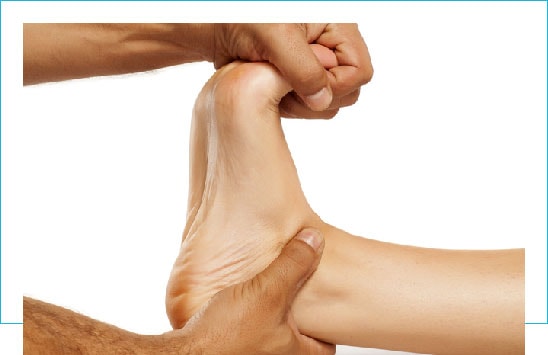
Stretching
Regular foot stretches are one of the best ways to deal with plantar fasciitis on a daily basis. They help improve blood circulation, thus reducing the swelling but they do more than that.
Making foot stretches a part of your daily routine will help strengthen your muscles while making your Achilles tendon more flexible, thus allowing your plantar fascia to stretch further without straining.
Stretching your calves will also help reduce the strain on your plantar fascia since they will be more supportive and flexible. This will also improve your walking posture.
You can do some simple exercises like rolling a tennis ball under your feet while sitting up straight, doing wall push-ups with your feet around 20 inches away from the wall or sitting and pulling on a belt wrapped around your foot.
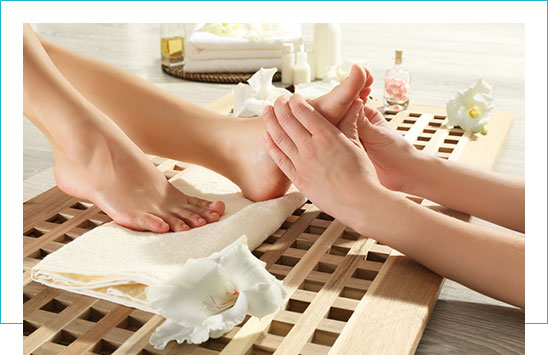
Massages
While massages can be beneficial for dealing with plantar fasciitis, you need to be extremely careful, or you might make the condition worse.
Massaging your own foot, using a massage machine or being massaged by someone who’s not properly trained is a huge risk, so avoid it.
Try and get help from a trained masseuse. Explain the problems you’re having in detail, and they should know what to do.
However, if the massage isn’t helping or you feel that it’s making the situation worse, stop it as soon as possible.
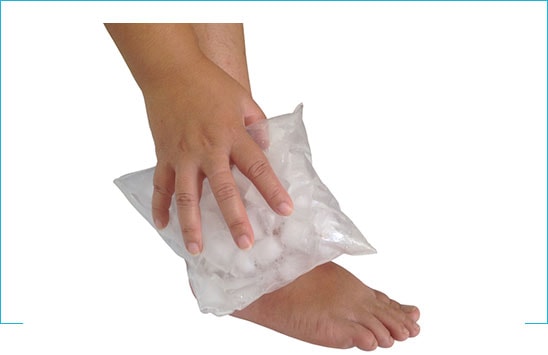
Icing
If you’re need of immediate relief, this is one of the best ways to get it. Applying an ice pack, or a pack of frozen fruit if you have nothing else, to the bottom of the foot can help with the pain and reduce the swelling.
Another beneficial technique is rolling a water bottle filled with frozen water over the bottom of your foot.
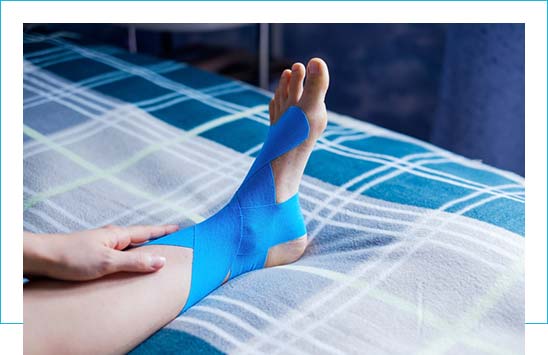
Using therapeutic tape
Therapeutic tape has been known to help with inflammations, and plantar fasciitis is no exception.
With that said, just slapping the tape onto your foot won’t do you much good. You should look into help from a professional who can use proper taping techniques which can be more helpful than just applying the tape yourself.
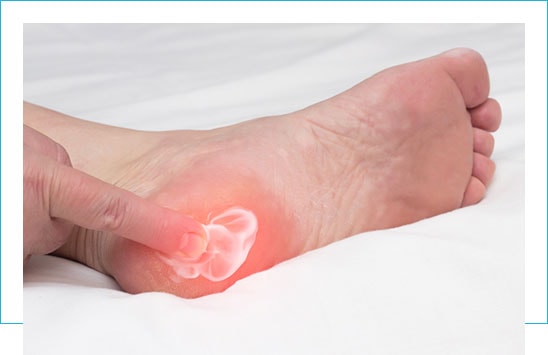
Medication
Pain relief medicine based on ibuprofen or naproxen sodium can help alleviate your pain while reducing the inflammation at the same time. However, they won’t cure the condition – only lessen the symptoms.
Anti-inflammatory creams that don’t contain steroids should also do a decent job of helping you deal with the symptoms.
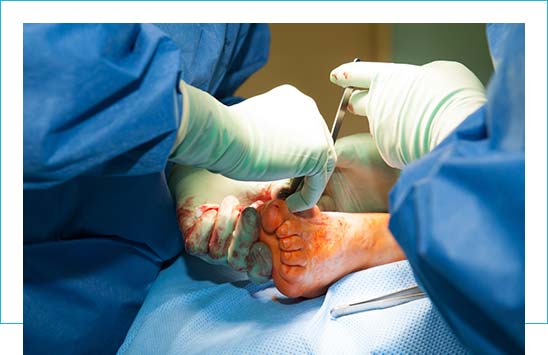
Surgery
In case all else fails and the problem persists, you might need to undergo corrective surgery. This is not so common, but sometimes it’s the best solution.
Consult with your doctor if you feel that nothing else is helping alleviate your plantar fasciitis and they might refer you to a surgeon if they feel it’s necessary.
However, surgery is usually only considered after at least 12 months of non-surgical treatment.
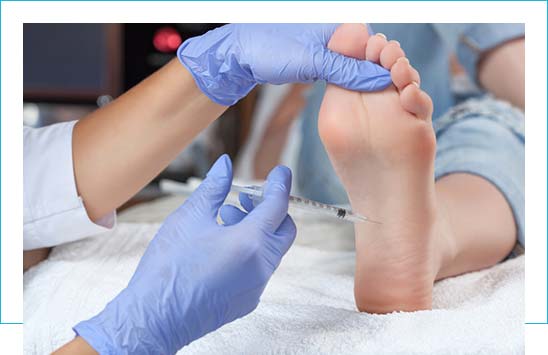
Injections
When most conventional therapy fails to show results, your doctor might give you a prescription for one of a few different treatments which involve injections of different substances.
Cortisone injections are the most common – it’s a type of steroid. The aim of the treatment is to reduce the inflammation and pain. However, it’s a risky treatment since it can lead to the degeneration of tissue in the foot and weakening of the plantar fascia, putting you at more long term risk.
There are a few other options, like stem cell injections and platelet-rich plasma injections, but they aren’t proven to be as effective as steroid injections. On the other hand, they don’t have next to no harmful side effects, so they might be a good option to try.
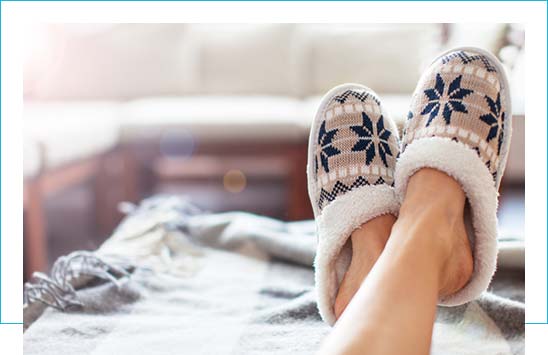
Resting
If you’re highly active and you encounter a bout of plantar fasciitis, a period of rest of about a week or two should help curb it. Of course, you should combine this period of rest with other treatments for the best result, including stretching.
After this period of rest, start out slow when returning to your regular physical activities – don’t just jump into them like you never left. That could cause the plantar fasciitis to return worse than ever. Ease into your previous routine over a period of a few weeks.
Plantar Fasciitis Shoes FAQ
My Verdict: These are the Best Shoes for Plantar Fasciitis
So, that’s about it for today! There’s only one thing left – I need to give you my pick of the best shoes for plantar fasciitis.
I can’t say that I’ve struggled too much to pick the winner since the Orthofeet Men’s Highline High Top Boots fit me the best. The insoles they come with are just amazing and they can be used for many different situations.
What did you think? Do you agree? Pop into the comments and tell me all about that.
References
- Wikihow.com, How to Give a Foot Massage (Online) Available from: https://www.wikihow.com/Give-a-Foot-Massage (Accessed 17 February, 2021)
- Mayoclinic.org, Plantar fasciitis https://www.mayoclinic.org/diseases-conditions/plantar-fasciitis/symptoms-causes/syc-20354846 (Accessed 17 February, 2021)
- Orthoinfo.aaos.org, Plantar Fasciitis and Bone Spurs (Online) Available from: https://orthoinfo.aaos.org/en/diseases–conditions/plantar-fasciitis-and-bone-spurs (Accessed 17 February, 2021)
- Healthbeat.spectrumhealth.org, Heal your heels, (Online) Available from: https://healthbeat.spectrumhealth.org/heal-your-heels-plantar-fasciitis-pain/
(Accessed 17 February, 2021) - Bluehillspt.com, Running with Plantar Fasciitis (Online) Available from: https://www.bluehillspt.com/running-with-plantar-fasciitis (Accessed 17 February, 2021)
- Robinsonsshoes.com Your foot shape and your ideal last shape – what shoe for you? (Online) Available from: https://www.robinsonsshoes.com/journal/foot-shape-ideal-last-shape-shoe/(Accessed 17 February, 2021)
- Self.com, 8 Shoe Mistakes That Could Definitely Be Causing Your Foot Pain (Online) Available from: https://www.self.com/story/shoe-mistakes-foot-pain (Accessed 17 February, 2021)
- Active.com, How to Pick the Right Shoe for Any Activity (Online) Available from: https://www.active.com/running/articles/how-to-pick-the-right-shoe-for-any-activity (Accessed 17 February, 2021)
- Wiivv.com, The Ultimate Insole Buying Guide (Online) Available from: https://wiivv.com/blogs/keep-going/the-ultimate-insole-buying-guide (Accessed 17 February, 2021)
- Wiivv.com, Shoe Care Tips For Every Type Of Shoe (Online) Available from: https://wiivv.com/blogs/keep-going/shoe-care-tips-for-every-type-of-shoe (Accessed 17 February, 2021)
- Popularmechanics.com, This is the Right Way To Tie Your Running Shoes (Online) Available from: https://www.popularmechanics.com/adventure/sports/how-to/a15492/how-to-tie-running-shoes/ (Accessed 17 February, 2021)
- Healthlinkbc.ca, Plantar Fasciitis: Exercises to Relieve Pain (Online) Available from: https://www.healthlinkbc.ca/health-topics/tr5853 (Accessed 17 February, 2021)
- Youtube.com Plantar Fasciitis Treatment with Massage, Stretches, & Exercises – Ask Doctor Jo (Online) Available from: https://www.youtube.com/watch?v=Bb7HyNJHh5k (Accessed 17 February, 2021)
- Verywellhealth.com Ice Bottle Massage for Plantar Fasciitis (Online) Available from: https://www.verywellhealth.com/ice-bottle-massage-for-plantar-fasciitis-2696407 (Accessed 17 February, 2021)






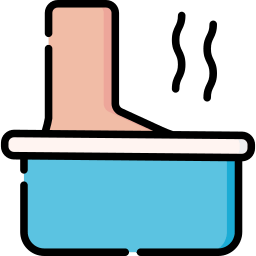
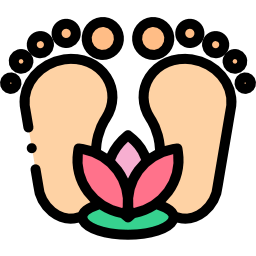

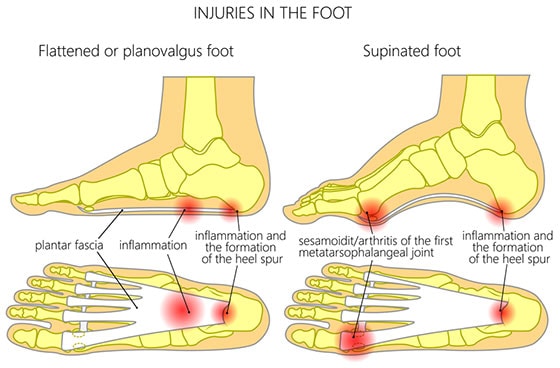
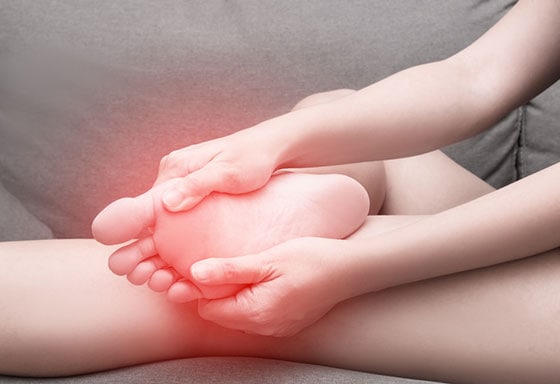
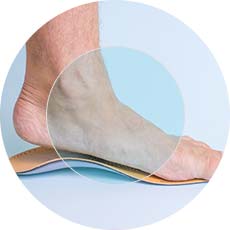
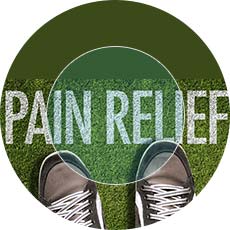
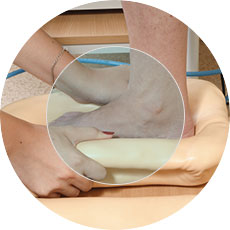


















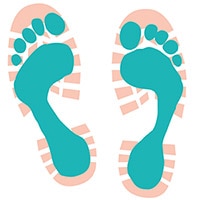
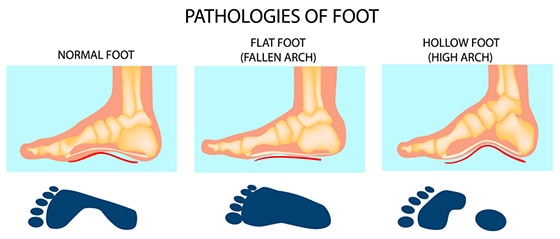
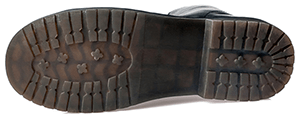
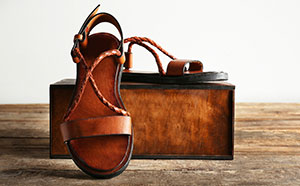
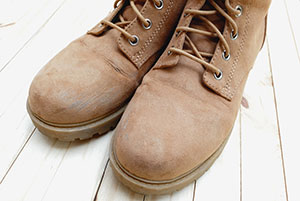
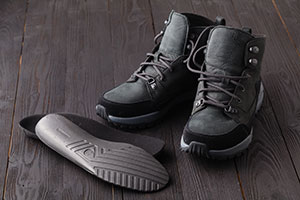
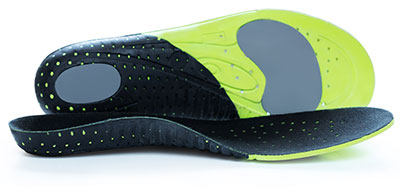
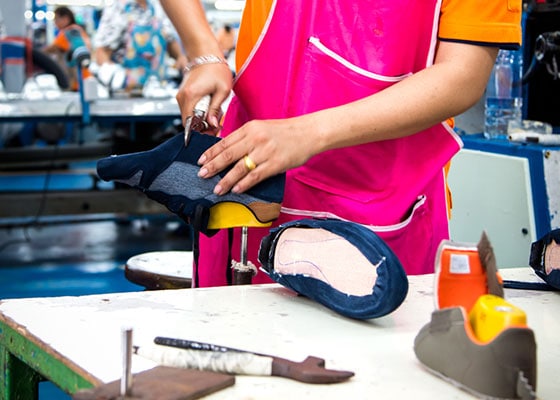
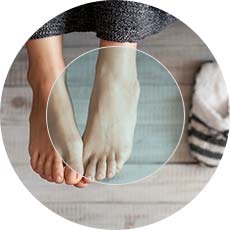
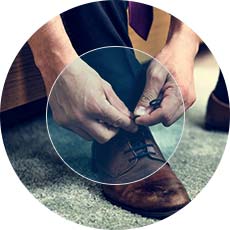
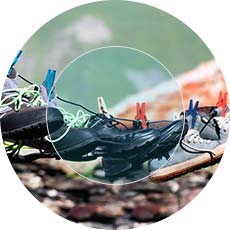









I was really in a need for a article like this. My feet has been in pain for quite a long time and finally I’ve planned ton act on it. Thanks for sharing.
Thank you for your comment!
Wow! I have never read such a detailed article. I am a Doctor due to which I have to roam around the hospital to check patients that include a lot of walking, standing and working for all day. Now, no matter what shoes I wear, I am suffering from planter fasciitis. This the reason I was looking for some of the best shoes to get relief. After Reading your article I am quite impressed with Orthofeet Men’s Highline High , You also have added to your verdict section too. I am looking forward to buy It. I will definately leave a review after some days of testing. regards.
Thank you for your comment!